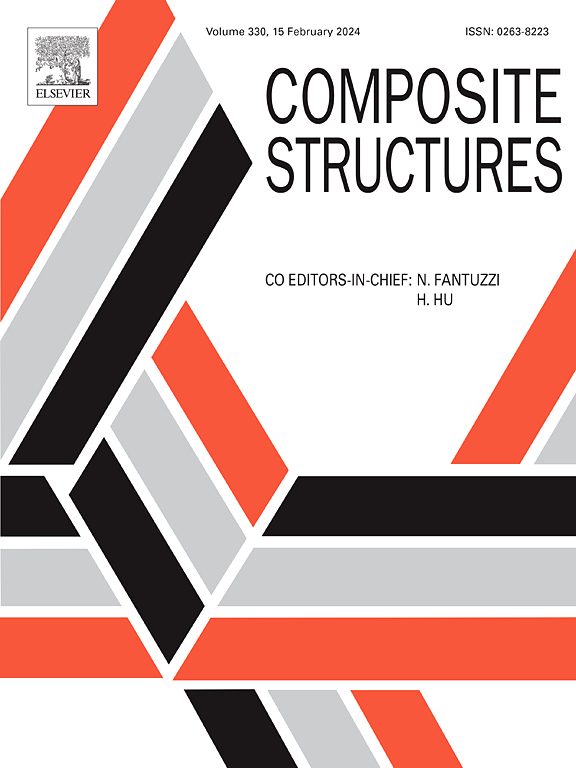Constitutive identification of materials with different symmetry classes through a genetic algorithm
IF 6.3
2区 材料科学
Q1 MATERIALS SCIENCE, COMPOSITES
引用次数: 0
Abstract
Composite materials play a primary role in many engineering applications. However, their mechanical description proves challenging because, at finer scales, they are characterised by the presence of significant heterogeneities in size and texture, which affect the macroscopic response of the materials. Classical continuum models are not always suitable for describing the macroscopic behaviour of such materials, especially when it is important to consider the microscopic level. To adequately address scale effects, several non-classical/non-local formulations have been proposed in the literature. Among these, the micropolar model, which is a non-local model of “implicit” type, has proven to be effective in representing the mechanical behaviour of anisotropic media, taking into account the arrangement, size, and orientation of particles. Within this context, this work focuses on modelling composites both as continuous and discrete systems, with the latter providing a finer description of the material. The aim of the study is to identify micropolar elastic constants of composite materials represented as rigid blocks and thin elastic interfaces. A heuristic optimisation approach based on the Differential Evolution algorithm is adopted to derive the constitutive micropolar parameters by exploiting the results of static and dynamic analyses performed on the discrete systems. The obtained results, for different material symmetry classes, indicate that the proposed strategies provide satisfactory outcomes, paving the way for experimental validation and potential engineering applications.

求助全文
约1分钟内获得全文
求助全文
来源期刊

Composite Structures
工程技术-材料科学:复合
CiteScore
12.00
自引率
12.70%
发文量
1246
审稿时长
78 days
期刊介绍:
The past few decades have seen outstanding advances in the use of composite materials in structural applications. There can be little doubt that, within engineering circles, composites have revolutionised traditional design concepts and made possible an unparalleled range of new and exciting possibilities as viable materials for construction. Composite Structures, an International Journal, disseminates knowledge between users, manufacturers, designers and researchers involved in structures or structural components manufactured using composite materials.
The journal publishes papers which contribute to knowledge in the use of composite materials in engineering structures. Papers deal with design, research and development studies, experimental investigations, theoretical analysis and fabrication techniques relevant to the application of composites in load-bearing components for assemblies, ranging from individual components such as plates and shells to complete composite structures.
 求助内容:
求助内容: 应助结果提醒方式:
应助结果提醒方式:


